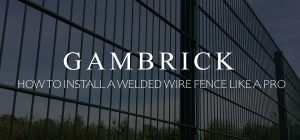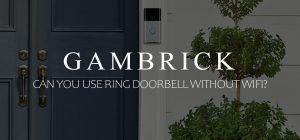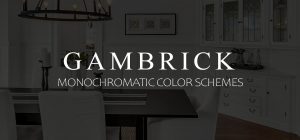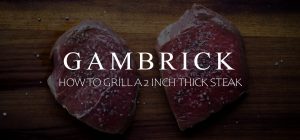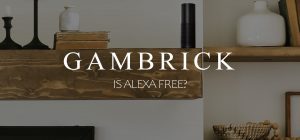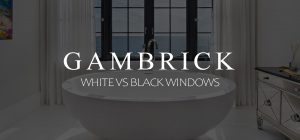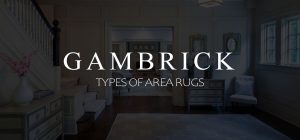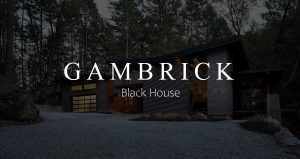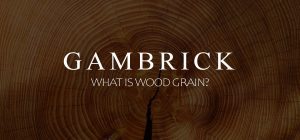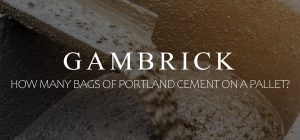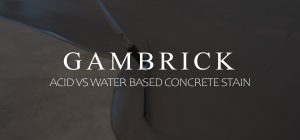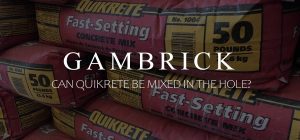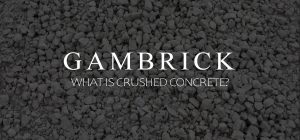What Is Concrete Board And How Is It Used?
Concrete board, better known as cement board, is typically used as an underlayment material. It’s sold in thin sheets that resemble Sheetrock. Typical sizes are 4 ft by 8 ft by ¼ inch to ½ inch thick. Cement board sheets are made of cement and plant fibers containing cellulose. The primary use of cement board is as a backer for tile, brick and stone. It’s much better than drywall because it’s very strong, stiff and resistant to water. Since tile is generally used in wet areas it’s important to use a backer material that isn’t prone to mold and mildew growth. Concrete board is also very durable and won’t disintegrate after prolonged exposure to moisture. It’s cut to size and screwed to the framing just like drywall. In wet areas, seams are also taped and waterproofed with a sealant. It can be used on floors, ceilings and walls.
Cement board is heavier than drywall and can require two people to lift and install. Cutting is harder too since it’s made primarily from cement. Use a carbide-tipped blade or a grinder wheel. This can produce a lot of dust so wear a mask or do it in a well ventilated area. The smell will be bad too. It’s sort of a skunky smell.
Because of how durable and water resistant concrete board is, you can use it both indoors and outdoors. This is a big benefit if your building an outdoor shower, bar or kitchen.
Ahead we’ll discuss concrete board in depth along with how and when it should be used.
Basics
Cement board is used as a backer material for installing stone, brick or tile.
It’s also called a cementitious backer unit or CBU. Because cement backer boards are porous, thinset, grout, and mortar adhere well to it. Backer boards can be nailed or screwed into wood or metal studs, cinder block, brick mortar, or concrete. However I recommend you use screws that are designer for use with masonry products.
Boards can be cut with a hand saw, circular saw, grinder, jigsaw, or multi-tool. Make sure to use a blade that’s meant for masonry products or it’ll quickly burn out.
Cement boards install just like drywall. Just measure, cut and screw them in. The biggest difference is that waterproofing materials are used in place of drywall compound.
Once the cement board is installed and water tight, install your finished material.
How To Install Cement Board
Cement board is installed in almost the exact same way as drywall.
Boards can be secured to the studs or plywood with special screws designer to penetrate masonry products. Usually these are sold right next to the cement board in stores like Home Depot. Many cement board products like Hardie even come with a grid and marks where screws are to be installed. This makes installation as a backer even easier.
Make sure the screw head is slightly indented into the cement board. You ideally want it flush with the surface. Too deep with weaken the hold, too high can interfere with thin tile installations.
You may also want to glue the backer to the floor or studs for an even stronger hold.
- Measure and cut your sheets to size with a masonry blade or grinder.
- Allow a slight gap of approximately 1/8 inch between cement boards to account for expansion.
- When installing cement board above a bath, leave at least a ¼ inch gap between the tub and cement board to prevent the wicking of moisture.
- Once all the boards are screwed to the framing, fill the joints with water resistant material. This is also typically sold by the cement board.
Once the cement boards are all installed and water tight, your ready to start tiling.
Be sure to only use cement board in areas that will be tiled. Unlike drywall, cement board doesn’t have a smooth finished surface.
Pro Tip: You may want to install an additional vapor barrier behind the cement boards. Although cement board is great at resisting water, if some does get through the vapor barrier will keep it off the wood framing.
What Is Cement Board Made Of?
There are two types of mixtures that are used to make cement board. Cement and particle board or cement and plant fibers. The cement in the mixture acts as a binder which holds the other materials. The particleboard or fibers act as reinforcement for the structure, providing the cement board with greater strength, durability and just a little flexibility.
Both types of cement boards are mostly interchangeable. I’ve used them and have never found any major differences and don’t really have a preference. They’re both great backer materials for indoor and outdoor use. But fiber board is typically a little bit thinner. If you’re tiling a really tight space that extra 1/8 inch may make a difference to you.
Fiber board also feels a bit more flexible to me. This isn’t really a benefit to the finished job because cement boards are supposed to be stiff and durable but flexibility makes them a little less likely to crack while handling.
One benefit of using fiber cement backer boards like Hardie is that they come molded with a grid pattern and mark outs for screws. This can save you time because you don’t have to mark the board out yourself.Standard cement boards don’t have this option.
How Is Cement Board Made?
Cement board is what’s known as a prefabricated building material. That’s a fancy way of saying it’s made in a factory and not on site. It’s not considered a raw material like concrete or wood. You buy it, cut it to size and install it. Drywall is another example of a prefabricated material.
Making materials in a factory saves time and money. In general, mass produced construction materials cost less than when you make them on site. Conditions are also generally better with no bad weather to deal with.
There are a few different processes to make cement board, but the most common is known as the Hatschek Process.
Unbleached cellulose fibers are re-pulped in water, refined and then mixed with cement, silica and other additives. The mixture is deposited onto a wire substrate, vacuum dried and cured to form sheets of cement board. Sheets can be made in a variety of sizes and thicknesses.
Similarity To Drywall
Cement boards are very similar to drywall. Both materials can be used as a backer and both are made in a factory. Both come in 4×8 sheets of various thicknesses. And both are screwed into the framing with finished edges. But that’s where the similarities end.
The main differences between drywall and cement board are price, weight, strength, durability and water resistance. There’s really no comparison between cement board and drywall as a backer. Cement board is simply better in every possible way. But it’s a lot more expensive to buy and install.
The weight of cement board can also be an issue if your not used to working with it. Even though the sheets are basically the same size, cement board is a lot denser which makes it heavy. For some applications you may need two people to install it.
You install cement board and drywall in the same way. The sheets are cut to size and screwed into the frame. Then the seams are waterproofed with tape and a sealant. For wet applications cement board is a much better option than drywall. It’s not waterproof but it’s very water resistant and typically won’t grow mold and mildew. It also won’t deteriorate when wet.
Some of the same tools used to work with drywall are also used with cement board. Such as a T-square or sheet holders and lifts. However cement board uses special screws that are designed to go through masonry products. The waterproofing systems are also different and you don’t use compound.
What Makes Cement Board Such A Great Backer?
Tile, stone, brick and grout don’t do a great job at keeping water off the backer. There are almost always small cracks where water can penetrate. This means that your backer material should be something highly resistant to moisture. Drywall offers green board that’s slightly water resistant, but it’s no where near the same level as cement board.
If you don’t use the right backer behind your tile or stone work it could lead to serious structural problems, mold or mildew. But not only does the backer need to resist moisture, it also has to support the finished material. You need a strong backer to support heavy tile or stone. Drywall is just finished paper that can easily peel but cement board is tough and durable. It won’t peel, break, or degrade and is very resistant to water.
While cement board isn’t technically waterproof it is highly water resistant. It dries easily and doesn’t typically degrade when wet. Especially when the water is just on the surface. In some cases absorbed water can damage cement board but this is unlikely if you properly waterproof the boards prior to installing tile or stone.
This is also true for floors and ceilings. Cement board is better at dealing with water than wood and ceilings can get damp from a shower. It’s best to use cement backer anywhere moist and damp. Cement board can be installed as a backer right onto the plywood sub floor to protect the wood and strengthen the tile.
Where Is Cement Board Used?
Cement board can be used as a backer anywhere tile or veneer will be used. It adds strength, stiffness, durability, and water resistance. Install it on the floor, walls or the ceiling both inside and out. It can be screwed to either wood or steel framing which makes it a very versatile material. Just make sure to seal the edges and seams in wet applications.
Brick & Stone Veneer: Brick & stone veneer should be applied to a strong backer. Drywall’s paper outer coating is flimsy and will tear off. Wood alone will have moisture and adherence issues. You can use wire mesh over wood but that’s expensive and a lot of extra work. Cement board is generally the best option. Screw it right to the plywood or framing and then install your veneer. This can be done inside and out.
Roofing & Siding: Specialized types of cement board can be used for roofing and siding. Concrete board resists water which makes it great for exterior applications. Just make sure to seal the edges so water can’t absorb into the boards.
Countertops: Concrete board can be used in place of a mortar bed to build a tile or stone countertop. Simply install the board over a wood frame and waterproof the edges and seams.
Acoustics: Cement board is dense which makes it a great acoustic material. It can improve the acoustics inside a room and block sounds from escaping.
Bars & Outdoor Kitchens. Frame the bar out of wood and then cover it with cement board. Waterproof the edges and seams. Then install tile, stone or brick. This is a great option for outdoor kitchens as well.
Cement Board Flooring
In the past, tile floors were installed on top of wire mesh secured to the wood subfloor. However these days this is hardly ever done. Instead, we screw down a cement board backer to the subfloor and then tile. It’s a much better option.
The addition of cement board to the subfloor makes floors stronger, stiffer and more water resistant. Once the cement boards are down we apply a waterproof sealer at the edges and seams. This helps keep water off the wood. No matter what material, grout or thinset you use, water can still penetrate tiny hairline cracks. Typically these are found in the grout. Cement board that’s been sealed is much better at resisting water than wood or a mud floor.
A cement layer also helps prevent cracked or loose tiles. Thinset creates a very strong bond with the cement boards porous surface.
I like HardieBacker for my floors. A 3 ft x 5 ft x .42 inch thick sheet costs $14.48 at Home Depot.
Major Brands
There are a few major brands carried in big box store like Home Depot and Lowes tat carry cement board.
- Durock: Made by USG. Durock competes with HardieBacker as the favorite product among tile installers.
- HardieBacker: Made by James Hardie Industries. The great thing about Hardie is that they offer boards with a grid pattern and screw marks built in. This makes installation a bit easier. Although the marks don’t always line up correctly.
- WonderBoard: Made by Custom Building Products, WonderBoard is a bit more flexible than Durock or HardieBacker which makes it better for some applications.
All three are very good products and we use them all. I like to use HardieBacker for the floors, Durock for walls and ceilings and WonderBoard in special situations where I need a more flexible product.
What Does Cement Board Cost?
Here is a list of the most popular cement boards with additional supplies you may need. All prices are from Home Depot at the time we wrote this article.
HardieBacker is a great cement board for use on walls, ceilings and floors. A 3 ft x 5 ft x .42 inch thick sheet costs $14.48.
Durock is another great cement board product. 3ft. x 5 ft. x 1/2 inch sheets are sold for $9.79.
Wonder Board is the last great cement board product we use. A 3 ft x 5 ft x 7/16 inch sheet costs $10.97.
Installation screws are called Backer-On. A 140 pcs. pack costs around $10.
You could also try Rock-On screws. A 185 pcs. pack costs around $10.
Red Gard is a great waterproofing and crack prevention membrane for use on cement board. It’s about $48 per gallon.
Additional materials will be needed like a screw gun, saw, tape measure, T-square and tools needed to apply the waterproofing membrane.
Tips
Here are some tips for working with cement board.
- Be careful when screwing too close to the edges. Cement board is easy to crack.
- Cutting cement board makes a lot of dust and it smells skunky. Make sure to do it outside or in a well ventilated area. And wear a mask.
- Make sure to gap the boards to allow for some expansion.
- Always seal the board after you install them in an area that could get wet. Make the edges and seams as water tight as possible. Cement board is very water resistant but not water proof.
- Technically you can install cement board with a ring shank nail but I recommend using a screw.
- Sink the screw head flush with the surface of the cement board. Too deep will weaken the sheets hold to the frame. Too high and the screw head could hit a tile.
- Boards can be cut with a hand saw, circular saw, grinder, jigsaw, or multi-tool. Make sure to use a blade that’s meant for masonry products or it’ll quickly burn out.
- You don’t need special tools to work with cement board. Measure and mark it with a drywall T-square.
- Cement board may look like drywall but it’s much denser and a lot heavier. Be careful when you work with it.
- Cement board doesn’t have a smooth finished surface like drywall so make sure to cover it all with material.
- Always make sure to use the same thickness as the drywall when you butt up against it. This is a common issue in showers.
Summary: What Is Concrete Board And How Is It Used?
Concrete board, better known as cement board, is typically used as an underlayment material. It’s sold in thin sheets that resemble Sheetrock. Typical sizes are 4 ft by 8 ft by ¼ inch to ½ inch thick. Cement board sheets are made of cement and plant fibers containing cellulose. The primary use of cement board is as a backer for tile, brick and stone. It’s much better than drywall because it’s very strong, stiff and resistant to water. Since tile is generally used in wet areas it’s important to use a backer material that isn’t prone to mold and mildew growth. Concrete board is also very durable and won’t disintegrate after prolonged exposure to moisture. It’s cut to size and screwed to the framing just like drywall. In wet areas, seams are also taped and waterproofed with a sealant. It can be used on floors, ceilings and walls.
Cement board is heavier than drywall and can require two people to lift and install. Cutting is harder too since it’s made primarily from cement. Use a carbide-tipped blade or a grinder wheel. This can produce a lot of dust so wear a mask or do it in a well ventilated area. The smell will be bad too. It’s sort of a skunky smell.
Because of how durable and water resistant concrete board is, you can use it both indoors and outdoors. This is a big benefit if your building an outdoor shower, bar or kitchen.
If you have any questions or comments e-mail us any time. We’d love to hear from you.



